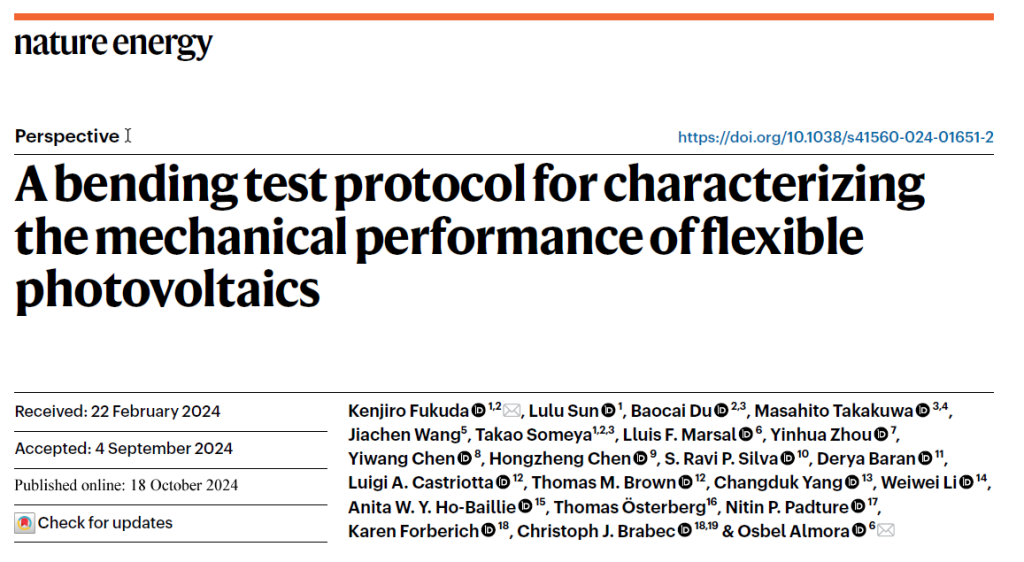- Home
- Uncategorized
- Emerging-PV initiative Leads experts in a protocol proposal for Characterizing Mechanical Performance of Flexible Photovoltaics
Emerging-PV initiative Leads experts in a protocol proposal for Characterizing Mechanical Performance of Flexible Photovoltaics

Flexible photovoltaic devices (FlexPVs), unlike the more common rigid photovoltaic devices, have great potential in portable electronics and Internet-of-Things applications, textiles, curved surfaces such as car roofs, and low weight applications such as drones and aerospace transportation. Over the past few years FlexPVs have made remarkable efficiency gains, with recent reports showing power conversion efficiencies over 24%, very close to rigid devices over 26%. However, the absence of a standardized protocol for evaluating their stability and mechanical performance makes it difficult to compare and evaluate the “flexibility” and lightness of FlexPVs, thus limiting their development.
In a recent article in the journal Nature Energy, a committee of 23 PV and mechanical performance experts of 12 nationalities have introduced a unified testing protocol aimed at improving consistency in the evaluation of flexible solar cells and panels. The protocol emphasizes the measurement of efficiency over 1000 bending cycles under 1% strain, emphasizing the importance of uniform application of the bending radius, flexibility testing with and without encapsulation, and detailed testing of bending orientations relative to flow
The team of experts was led by Kenjiro Fukuda, from the RIKEN Center for Emerging Matter Science in Saitama, Japan, and Osbel Almora, from Universitat Rovira i Virgili of Tarragona, Spain. Kenjiro and Osbel are also members of the Emerging-PV.org consortium, along with Takao Someya, Karen Forberich, Christoph Brabec, Luigi Angelo Castriotta, Anita W. Y. Ho-Baillie and Derya Baran.
